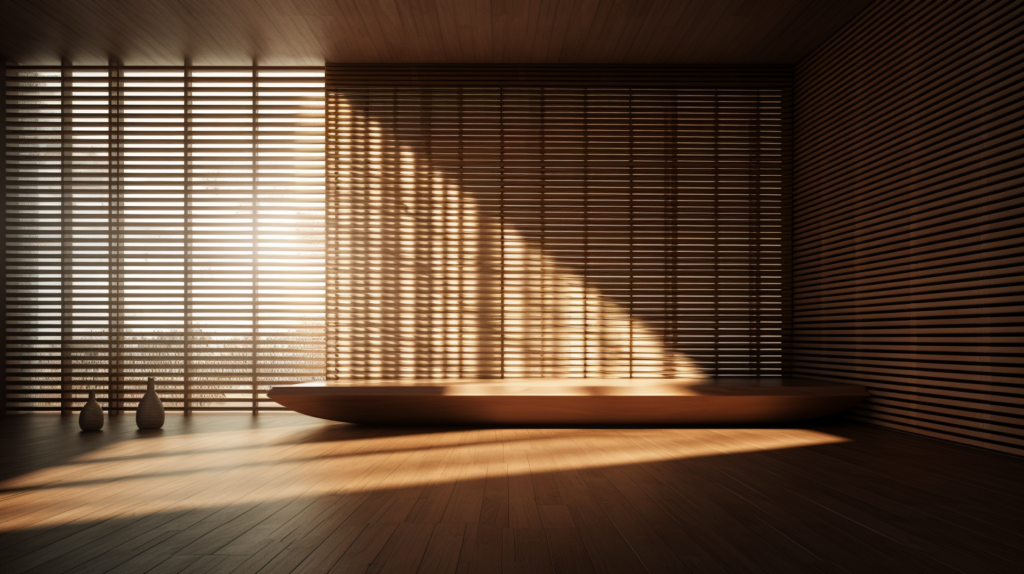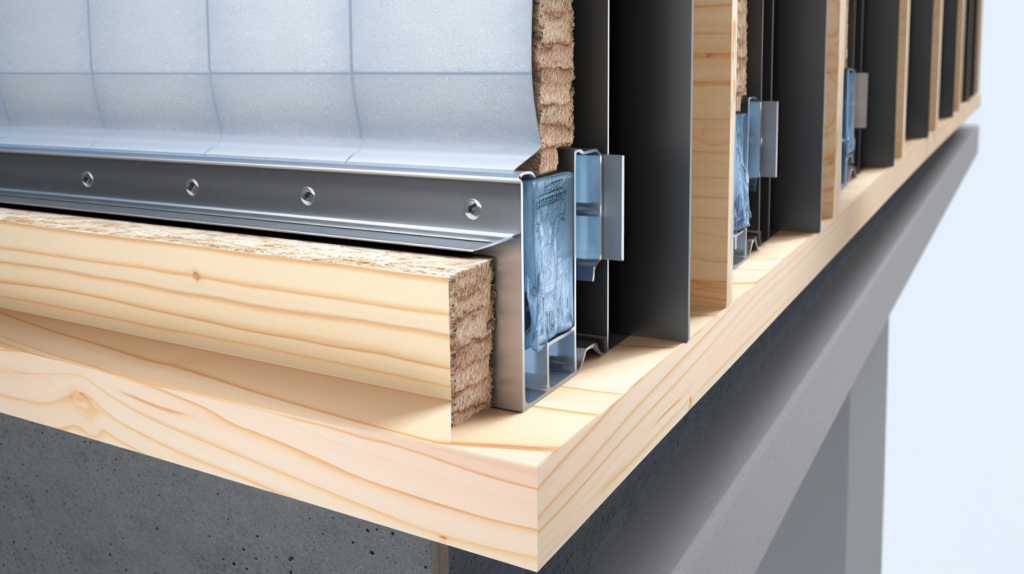Is wood really the rustic, acoustic dream material movies make it out to be for soundproofing cabins and studios? Reality proves less kind.
Despite the popular appeal of wood paneling for damping noise, wood falls severely short in effectively blocking and absorbing sounds compared to other specialized materials.
Let’s examine why wood fails from an acoustic lens before overviewing better soundproofing alternatives and practical steps for moderately improving wood’s mediocre attributes.
Is Wood Good for Soundproofing?

When it comes to soundproofing an interior space, many people consider installing wood panels or boards to help absorb noise.
The natural look and feel of wood offers aesthetic appeal. But despite its visual warmth, wood proves lacking in functionality for damping sound transmission.
There are better options that provide superior noise blocking and absorption without sacrificing aesthetics.
Why Wood is Poor for Soundproofing

Wood comprises a porous material containing natural voids and channels within its fibrous structure. These spaces seem suitable for absorbing audio vibrations on the surface.
However, wood lacks the thick density required to prevent noises from penetrating deeply or passing through to the other side.
The relatively light weight and stiffness of most woods also lead to deficiencies in their soundproofing capacities.
Wood Vibrates and Transmits Noise Easily
When sound waves come into contact with a material, they essentially exert a push and pull force that causes vibrations.
The oscillations depend on the rigidity and density of the substance in question. Wood contains a lightweight, stiff fiber arrangement in comparison to stone, concrete, or metals.
But wood gives too easily upon exposure to audio vibrations. This flexibility causes boards and panels built from oak, cedar, pine, etc.
to vibrate readily when subjected to loud noises. While the wood may absorb some high frequency sounds, it largely shakes in reaction to the waves rather than containing them.
This quivering motion passes along noise to any surrounding materials through contact. Thin wooden surfaces resonate particularly terribly, enabling unrestrained transmission to spaces beyond.
Lacks Sufficient Mass to Block Sounds
Mass constitutes a critical factor for evaluating the sound blocking capacity of a given material. Greater mass means a substance proves heavier and denser for audio vibrations to penetrate.
Many sources recommend a minimum density of around 2-4 lbs per square foot for noise barriers. But even hardy wood types fall short of this qualification in most typical panel or board assemblies.
For perspective, a standard 2×4 stud wall with 1/2 inch plywood sheathing equates to just 1.3 lbs per square foot—minus any finishing treatments.
Such a wood-based assembly enables noises to easily waft through without meaningful impedance or absorption.
The limited mass ensures almost no damping of sound occurs as waves pass from one room to the next unchecked.
Allows Noise Penetration Through Porous Surface
The porous composition of wood consists of tiny chambers and passages within the organic plant fibers. This matrix seems like it would entrap at least some noise vibrations attempting to traverse through it.
But wood’s stiffness prevents those small voids and channels from adequately compressing together to snare sound waves at an impactful level.
Essentially only extremely high pitched noises get trapped within the rigid wooden anatomy, leaving most audio free to stream through it.
Testing shows that even dense, thick wood panels remain acoustically transparent enough for noise to penetrate from one side to the other.
The generous air cavities simply cannot trap most sound waves given wood’s innate inflexibility and propensity for vibration.
This porosity gives wood decent thermal insulation qualities, but no such luck when aiming to insulate against noise infiltration.
Struggles to Absorb Even High Frequency Noises
Wood’s limited flexibility and void-filled composition bestow minimal capacity for it to absorb audio vibrations.
At medium to high volumes, wood panels tend to reflect a majority of sound waves back rather than soaking them up.
And achieving adequate absorption requires much thicker depths than most homes contain space for anyways.
Where wood shows any positive absorbing functionality rests only with very high pitched sounds.
Particular wood types in optimal configurations can dampen some degree of high frequency noises like voices or dogs barking.
Though even then, traditional insulation materials easily outclass wood’s meager absorbing talents.
This further confirms that the stiffness that makes wood so architecturally useful also makes it poor at acoustic absorption.
The fact that it readily transmits lower pitches while barely absorbing high notes cements its status as a terrible soundproofing choice given better options for similar costs.
What Are The Better Soundproofing Alternatives

Thankfully for both interior peace and attractive designs, wood no longer remains the only material choice for construction or decoration.
Myriad other products provide exceptional noise blocking and absorption without needing to harvest trees.
Modern homes and studios concerned with audio isolation turn to heavyweight barriers or advanced sound damping compounds rather than attempting acoustic feats with panels from the lumberyard.
Mass Loaded Vinyl (MLV) Barriers
Mass loaded vinyl makes up one of the most common and effective soundproofing materials.
As the name suggests, it incorporates extremely dense vinyl loaded up with barium sulfate or other mineral fillers to increase mass.
With a rated density around 1 lb per square foot, MLV blocks noise through sheer heaviness. The weighty limpness allows barely any audible vibrations to ripple through its core.
MLV barriers screw or glue against existing walls to produce easily a couple extra points of sound transmission reduction.
The viscoelastic property also enables MLV to dampen vibration noises within a room by absorbing the movement energies.
As a flexible, moldable heavy layer, MLV outclasses wood for noise control while still permissible indoors for space efficiency.
Double Drywall with Green Glue
For stopping noise transfer through adjoining walls, a popular trick involves doubling up sheets of drywall utilizing a special Green Glue adhesive between them.
Rather than using fasteners to connect the dual drywall layers directly stud-to-stud, the Green Glue works to dampen and decouple the rigid gypsum boards from each other.
It cushions between them with a highly viscous, noise-dampening formula. This prevents audio vibrations from bridging straight across between the drywall sheets’ mass.
So any noise penetrating the first skin then becomes partially trapped and absorbed within the Green Glue before reaching the second drywall barrier.
The full assembly curbs both airborne and structure-borne noises notably while remaining cost effective and space conscious.
Rockwool Insulation
Among all common insulation types—including fiberglass, cellulose, and spray foam—dense rockwool reigns supreme for sound dampening abilities.
This natural material derived from molten stone contains an extremely high void ratio with thin, interlaced fiber strands.
The porousness allows substantial sound absorption while its density lends beneficial mass.
Together this gives rockwool exemplary noise insulating qualities for spaces requiring both blocking exterior sound entry and absorbing interior echoes.
With rockwool infused into wall cavities, noise struggles to flow laterally across or through the insulation.
Rockwool installation benefits new and existing builds alike thanks to customizable batts and blowing application capacity—all while gaining fire resistance too.
For both insulation and acoustics, rockwool surpasses wood’s talents exponentially.
How To Make Wood Wall Studs More Soundproof

Wood wall studs enable interior walls to stand sturdy yet pose acoustic downsides from their tendency to transmit noise.
Thankfully, enhancing the soundproofing of wall assemblies with wood studs proves quite achievable through insulation and isolation techniques.
Applying these effectively curtails noise passage through the walls for improved room separation without abandoning wood-framed construction methods.
Install Sound Insulation in Wall Cavities
Filling the voids within wall stud cavities constitutes the first priority for limiting noise transfer between spaces.
Dense insulation materials like rockwool or fiberglass wool excel at occupying cavity space for enhanced sound absorption and damping.
Their porous composition muffles vibrations as noise attempts to penetrate through the wall’s core. Thicker insulation options block more audio range frequencies.
So maximize possible insulation amounts behind any wall finish layers to noticeably stifle acoustic transmission through the wood stud zones.
This affordable enhancement cuts down noise leakage markedly through what would otherwise act as echo chambers.
Apply Resilient Channels Over Studs
Resilient channel rapidly emerges as a game changing isolation principle for soundproofing wall studs without impeding installation of drywall or paneling finishes.
These preformed steel furring strips screw across existing studs with noticeably rubbery flexibility rather than rigid.
As finish layers like drywall fasten to the channels instead of directly against the wood studs, the floating suspension effect dampens vibration passage noticeably.
This “decoupled” assembly means noise now cannot take the most direct lateral route across the wall studs themselves.
So installing resilient channels over existing studwork upgrades older and newer construction alike for superior sound isolation abilities with minimal hassle or renovation requirements.
The combined insulating and isolating improvements lend wood stud walls commendable resistance to audio infiltration and next door disturbances.
Cost effective upgrades like these enable households and businesses to control noise issues in wood-framed buildings for enhanced daytime productivity and restful nights.
With clever manipulation of materials doing what each handles best, acoustic comfort joins forces with enduring structural integrity.
Conclusion
In conclusion, wood on its own is an acoustically lackluster material prone to enabling noise transfer while absorbing little sound energy.
Yet when thoughtfully combined with superior insulation and isolation materials, wood finishes can accent comfortable, quiet spaces for optimal uniformity of style and function.
The key remains relegating wood to supplemental decorative roles while heavy-lifting soundproofers do the acoustic work unseen.
With this practical perspective, residential and commercial spaces alike can balance wood’s beauty against properly achieved noise control.
